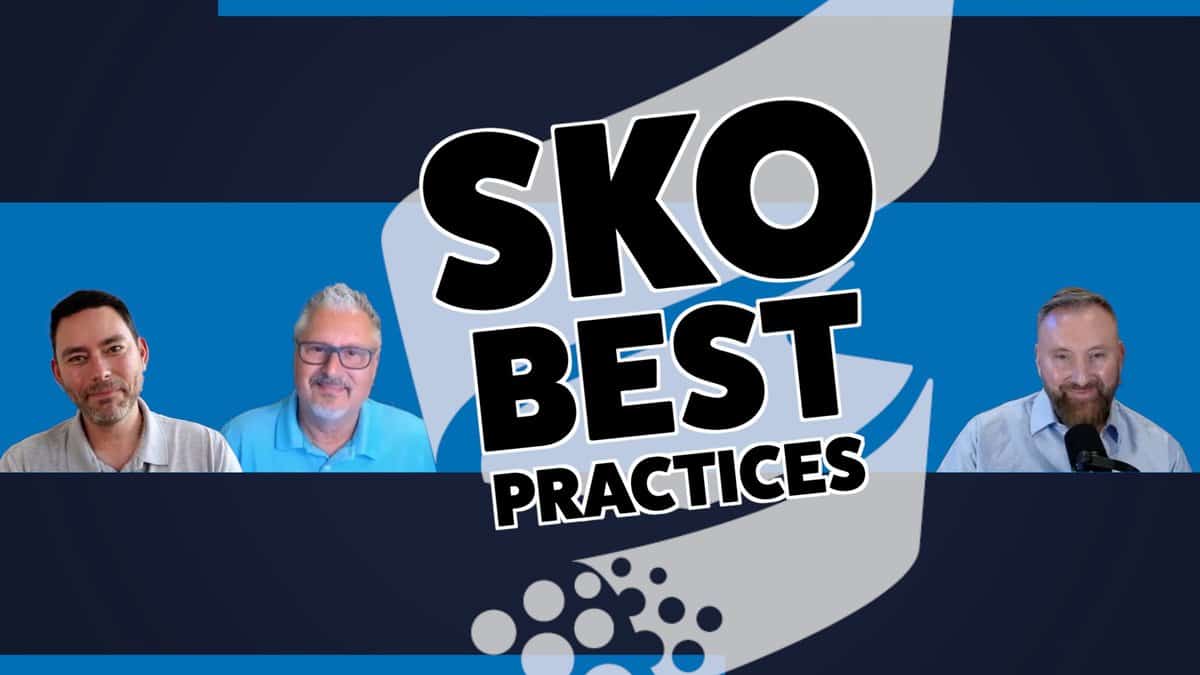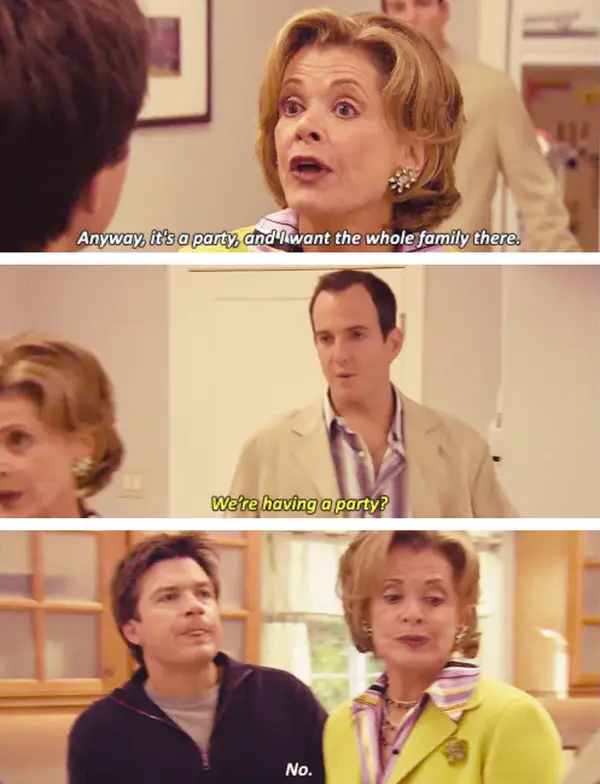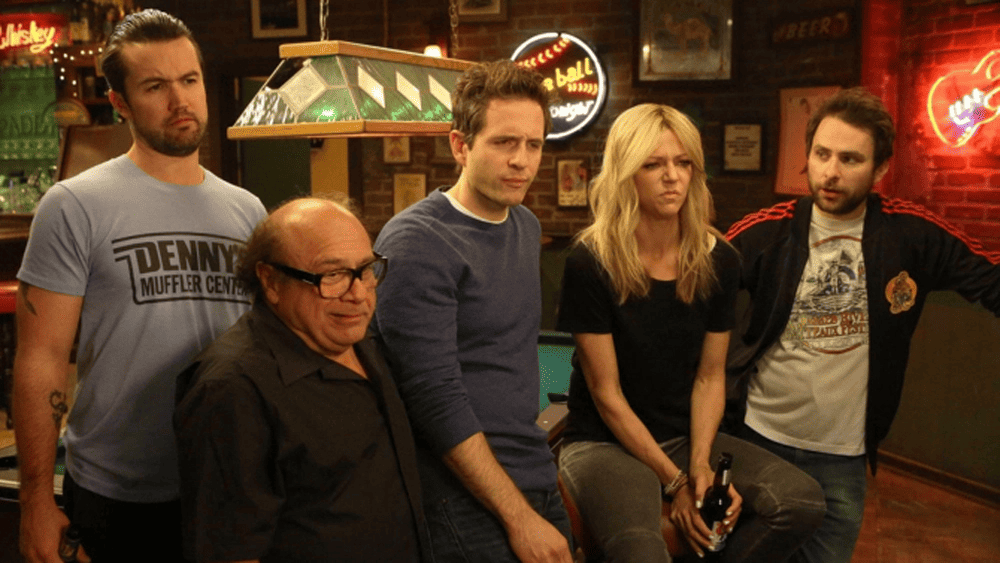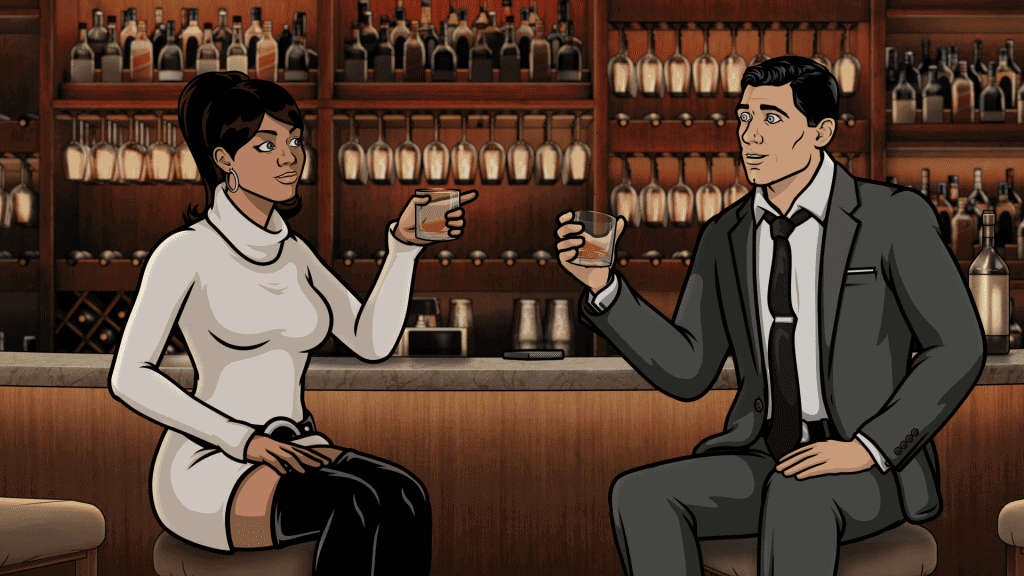What if your favorite TV characters spoke at your 2024 Sales Kickoff (SKO)
What if your favorite TV characters spoke at your 2024 Sales Kickoff 2024 SKO is our take on SKOs with celebrity or other “star” speakers. Want to...

Best practices for your 2024 SKO is a conversation between 2Win’s Chad Wilson, Ron Kendig, and Dan Conway about how to best plan for your 2024 SKO. See below for a video and transcript of the conversation.
Hey there, it’s Chad with 2Win. I’m joined here with Ron Kendig, who runs our facilitation and delivery organization, and Dan Conway, president/CEO of 2Win. And today we wanted to talk a little bit about SKO’s. SKO season is among us, and my guess is many of you are in the planning stages for your sales kickoff later this year or maybe early next year. One of the nice things about working at 2Win is we get to see a lot of sales kickoffs. We’ve not only have we delivered at hundreds of sales kickoffs, each of the three of us have been in senior sales leadership. We’ve planned our own SKO’s. We’ve seen what works really well, what maybe doesn’t work as well. We’ve seen some really creative ideas and so we wanted to share some of the things that we’ve seen with you, in effort to just kind of help you get some ideas and some things, think of some things as you’re programming your sales kickoff events. So, we’ve got three categories to talk about one, what are some best practices or priorities that we’ve seen or that we think you should think about as your programming your kickoff? Two, what are some fun and creative ideas? Maybe something that’s a little bit outside of the box but isn’t weird that is really effective. And then third, what are some maybe SKO crimes, things not to do or things to be aware of? All right guys, so let’s start with the first one. So what are some best practices or priorities that you think we should be thinking about with SKO’s?
Well, one thing I’ve seen, Chad, that works really well and, you know, given we’re doing a lot of skills training, if you want to do skills training during your SKO, we’d like to use a masterclass approach that works really well where you might have a couple select individuals get up and maybe present or role play, something like that that allows the others to observe by learning. What it also does is it puts that skills if you’re like doing a skills methodology, it puts it in the context for the audience. So it gives them the perspective of, you know, I could see myself doing that when I’m working with my product.
Yeah, I love that idea ’cause I think it handles a couple of things. One, it gets everybody to be able to practice at tables and a few people will get up in front of the room. So, you maybe manage a risk a little bit. Like I’ve seen some people that’re like, well, we want to put pressure on ’em and put ’em up in front of the room. And it’s like, well, sometimes that goes very badly. Know who’s-
Chad, you already skipped to the crimes part. We still have two other sections
Unintentionally. Sometimes that could go very badly. But the nice thing about the masterclass approach is because we’re doing table group, you can preview what’s going to work and you can hand select the people you want to put up. And so I think that solves both of those issues pretty well.
Yeah.
Yeah. What about you, Dan?
I think, yeah, I think when I think about best practices, maybe backing up to the big picture of balance like I’ve been to SKO’s where they can be I’ll say lopsided one direction or the other. Sometimes they could be way too much fun and you don’t get enough done, right? And a lot of those days are over and then often the pendulum can swing the other way and it’s, they’re so intense that you’re drinking from a fire hose and you walked away with what feels like a lot that turned into be not that much at all. So I think it’s a balance of fun and creative and entertaining, learning. What are you trying to learn from the event? And then I think vision, right? What are the goals and what are the top priorities of the organization that you are really trying to focus on there? And I think the fourth category I’d say is teamwork and team building and relationship building. ‘Cause you just don’t get a chance nowadays to get together that often, whether it’s virtually or in person when you’re doing an SKO, that time to build some relationships, even if it’s over Zoom, over Teams or over, you know, over a in-person event. Those are the four things that I would think about when I was putting together the agenda.
Yeah.
Can I add one? The one I would add is motivational. And I, because I think that is a component. Now, sometimes it, like you said, without balance, it’s just all motivational and you don’t get anything. But if you can weave that in and get the folks motivated as part of that, I think that’s a, so there could be five.
Yeah.
I think it’s a good add, but, and it kind of connects with one I was thinking about, which is, you know, I have a music performance background, so I often think about these things in terms of what is the audience going to experience. Like if you’re going to a concert like it, the way a band lays out the concerts, very intentional. It like, takes the audience on a journey. And so thinking about what is it going to feel like for the audience as they’re going through the SKO. Is the opening appropriately energetic and emotional? Like does it speak to them and draw them in? Do you give them time to absorb any education that they’re going to get and process that? Do they have time to relax and build relationships with people in the right time? So like, thinking about the programming of that and the sequencing of that, so it’s not just like slamming it through because it’s going to feel different. And one of the things that really, that matters to me is like speaking to people’s emotions. I think kickoffs are an opportunity for leaders to really communicate who they are personally. And the audience is going to make judgements of anybody that’s on stage. Is this somebody that’s believable, that’s authentic? Do I want to follow them? And to be mindful that they will be making judgements of who we are, our character, our leadership ability and kind of prioritizing how we approach that. So it’s really important to not only be thinking about that, but as you’re determining how are we going to deliver that to practice like at performance level at least three times in front of three different audiences to make sure that we get a broad point of view on what works and what doesn’t so that we can make sure that our tone, our affect, our body language matches the story which matches the venue. And that it all feels like it makes sense together and is thoughtful. I mean, that makes a huge difference.
I couldn’t agree more. And two thoughts on that. I’ve always thought about big event, big 10 events, kickoffs, regional QBRs, opportunities when you’re getting in front of people on a big stage environment as an opportunity to really stand out as a speaker.
Yeah.
Right. I mean, when you think about that, when you think about the big SKO’s that you’ve been to over time, there’s a person or two that stands out. They had the best presentation, why? They connected with the audience in what way? Right? They’re all the way down to their attire. Right? I mean, it is literally an opportunity to craft your message and deliver it with excellence. The other thing I’d say is, you made me think of another idea, Chad, which is, you know, a 2Win. We talk about the value pyramid and when you think about connecting with the different people in your audience the different stakeholders in your audience and making sure that you’re thinking about your messaging hitting the different levels of the titles and departments in the audience so that you’re connecting with them emotionally and making sure that you’re staying engaged so that it’s a valuable presentation.
Yeah, totally. Go ahead Ron.
I was going to say, and then using that pyramid, connecting to the structure, we have a structure here and using that structure also helps you, you know, you want to make sure that you’re going in that presentation with that specific structure, that’s going to help you make those connections. It just made me think of our structure connected to the pyramid and how when we, whenever we deliver, it’s always in that structure, right? It might be, it might be 15 minutes, it might be four hours, but it’s always using that structure.
Yeah. And if you think about it, any of the best presentations we’ve seen at a kickoff, they always have a really well thought out and prepared limbic opening. And it’s connected, you know, across the theme of what the SKO is overall and maybe what their theme is for their department or their particular, you know, speech.
Yeah.
Or keynote.
Agreed. Yeah. Great points. And you know, to that end, if, you know, if you’re watching this and you’re a 2Win alumni, you’ve been through that before. You’re speaking at an SKO and you want a refresher, hey, what were these cards again? Go to 2Winglobal.com and hit contact us and let us know what, how we can help you. Happy to get some of these materials back in your hands so you can refresh if you’re got an SKO talk coming up. So let’s move to maybe number two. Fun and creative ideas. We’ve seen all kinds of stuff that folks have done. Some work, some don’t. Let’s maybe start with, you know, what works. What are some things you guys have seen that was kind of creative and really brought people in?
I mean, I think game shows are fun. Game shows definitely work. I’ve been involved with one where I got to be the host, so that was fun. And we did Jeopardy. Now we did it from the standpoint in that particular SKO was about people learning particular product features. It was there, I was a product manager at that time. So, but it really got the attention of the audience and, you know, there was a little shtick in there too that made it fun but it made it a different way instead of having them sit in a room and, you know, having to try to figure it, you know, learn this stuff through force. They learned it through fun. And it was amazing. It was amazing how much uptake there was.
Yeah. I had one where, one of my favorite ones was Family Feud. What I love about Family Feud as a option for an SKO is you prep in advance what the questions are and the questions are intentionally aligned and the answers, right, to what you’re focusing on at the kickoff. So it can be product oriented, it might have been a launch of a new solution that you’re launching there that might have some questions to see if they paid attention, you know, in the previous product management launch or whatever the education was before that. But I think the most important thing is coming up with something that’s fun, competitive, team oriented, and has a reward at the end.
Yeah. Competitive, team oriented, and has a reward at the end. I mean, I think that speaks to salespeople, right? That’s how a lot of us are wired. Yeah. I, so I’ve got a thought that I want to come back to. So if I forget personality, right? Let’s come back to that. I want to stay on the game show idea. The Family Feud was a lot of fun. I was at that SKO or one of ’em that where we did one of those Family Feuds. It works really, really well. I think in general, one of the things that we’re trying to do with these fun ideas is figure out how do we create engagement with the audience at scale kind of one to many. So these are particularly helpful if you’ve got, I mean, more than 50 people, it kind of doesn’t matter if it’s 50 or 5,000, like the way you’re going to engage with them is going to be fundamentally different than if it’s 20. You’re probably not going to call people by name in the back row. And so whether it’s game shows or quizzes like Kahoots or like the trivia stuff, Kahoots or quizzes or poll everywhere, you know, these different things where they can get on their phones and engage with the presenter makes a huge difference on whether or not they’re willing to engage and learn. So any of that stuff that we can do, I think helps to drive engagement. Coming back to the personality thing, Jeopardy, you said you did like a little schtick. I’m assuming that means that you took on a character, is that what you mean?
Yeah, I took on the character of Alex Trebeck and then I hit a little index card with the question. I would throw it away and everyone would get a big kick out of it.
Yeah.
Things like that.
Was this Will Ferrell as Alex Trebek or was this-
Yeah, it was before Will Ferrell. Yeah. So taking on the personality is, is super fun. When we did Family Feud, one of the ones where we did Family Feud, we had a lot of fun with it. Another one that we like to do is like a Got Talent competition where you have a panel of judges and one of the things that makes it really fun is for the judges to take on a distinct personality. Like someone is the Simon Cowell, the kind of jerk with really direct feedback and someone’s really positive and you know, the Heidi Klum, if you will. And it kind of channeling some of those personalities and like getting in role. Not only are you going to give actionable feedback that is helpful but it’s also funny because they’re waiting for, they’re waiting for like the last person. What are they going to do this time? And all of that. Not only is it fun and engaging like it’s emotional, it’s memorable. It makes it really stick.
Yeah. And you know, there’s familiarity with it because a lot of people know the different game shows, know the competitions. I think to me what’s interesting is we can, we can sit down with a client and tailor it around them. What’s the personality of your organization? How much humor do you want? How serious do you want it to be? How educational do you want it to be? And then coming together with the right approach for that. And then I think trying to make it exciting and fun and entertaining for the people that are involved in it. I think to me, I’ve found when we’ve come in and done that, those are, you know, just super effective. And people enjoy ’em and they bring it up for years.
For years.
And I think people, oh, sorry. I think people learn more. I really do. I’ve had people leave one of these sections and go, man, that was a lot of fun, but wow, I learned these three things.
Yeah.
You know, if you can get there and that brings up one, well maybe we’re going to go to that in crimes. I’ll wait to talk about less is more, but we kind of touched on it a little bit
But let me tee you up real quick. Why don’t we move, let’s talk about topic number three. What not to do. What are some mistakes that we’ve seen? Things that are just weird. Like what are some SKO crimes we need to be mindful of?
So the big one in my mind is less is more. And Dan alluded to it earlier, when you’ve got, so you’ve got a bunch of stakeholders all vying for time. Everybody, you got 10 product managers, everyone’s got a story. You got to figure out what not to deliver. This is the key to really making it stick for those folks to walk out and actually get a behavior change and actually have them remember the three things you want them to remember. Don’t deliver ’em 20. They’ll never be able to sort through it. So to me less is more is huge for these SKO’s you have limited time, you got major things you’re trying to get done. There’s a balance.
Yeah. Well, I want to add on to that. I completely agree. And this can be, this can be challenging particularly as an executive team. You’ve got peers across the aisle that want face time with the sales team and to tell them no could be hard. Like you could take a political hit on them if they don’t get time in front of them. But ultimately the way that I used to prioritize this is I would ask the question are, could you be equally as effective delivering this remotely? Is there a reason you’re going to be more effective if we give you 30 minutes or an hour in front of them and go beyond the initial, well, it’s just different in person. I’m not saying, that’s not the question. The question is, could you be equally as effective if you did this a different way? And that helped me to sort out, you know, things that we’re going to take out of the agenda and do maybe later or do ahead of SKO or maybe do a video on it or a training class on it or something that that we could handle with product updates or a new marketing deck that’s getting rolled out. Like sometimes it matters that we do it at the SKO and sometimes it doesn’t. And that really kind of helped generally speaking, it’s like if this is informational and not actionable, it’s probably on the bottom of the list to be included. I want things that are actionable that are going to drive emotion, engagement with the business, connection with their team and their leadership. And that’s the stuff that I would prioritize.
Yeah, I agree. There shouldn’t be anything on the agenda that can happen at another place. Right, and so even for our training, there’s sometimes where it makes sense to do the full training at the event, right? It might be a game show, it might be a large group training event that’s happening with 500 people and 10 coaches walking tables. That’s happening all right there. There might be breakout rooms with 15 rooms that happen after an initial keynote speech to create some motivation and clarity. Or there could be training that happens before the keynote and then follow on coaching and reinforcement that’s happening at the event. So, but I do think it follows the philosophy of what you’re talking about, which is nothing should happen there that doesn’t need to happen there. And that could be any of those different examples that are all choices based on what your intention is at the meeting. The other thing I’d say that’s a real crime that I’ve seen and it’s just so easy to put this aside ’cause if you do everything we’re talking about, that’s a pretty full job, being thoughtful about all the different topics we’re talking about. You’ve put a lot of work into this thing. One thing that I wouldn’t miss is making sure there’s absolute clarity on what the call to action is when you end the event.
Yeah.
Like, what is it? And it can’t be 10 things. What’s the one thing or two things that you know leaving the event that you want to make sure each staff member has full clarity on what their job is when they walk out that door.
Yeah. I love that. It’s like, it goes back to programming. If this were a television episode, how’s it going to end? And what do we need to do throughout the event, so that the ending is what we want it to be?
Yeah.
Yeah. And related to that, another crime is when you have multiple stakeholders and you have a theme and you have, you know, you’re all delivering against like this story and there’s one stakeholder that’s delivering completely different. Like everyone has to be on the same page with regard to sticking to whatever you’re trying to drive. To Dan’s point, if you’re trying to drive that call to action, is everybody headed there?
Yeah, definitely. And, you know, speaking if you’re going to bring third parties in, that’s one of the things that we always ask is what are the key themes of the SKO? Where do you want us to lean in as a third party to go maybe a little bit different direction than you probably want to as somebody that’s going to live with them for the rest of the time?
Yeah. Well, and sometimes, most of the time, if not all the time, what we found is it’s good for a client to have somebody else saying the message also, right? From, have somebody in terms of a thought leader, consulting group, a training group to come in and say, you know, I understand this is what the initiatives are of the organization. Let us share our perspective on why that really does matter and what we’re seeing happen in the market.
Right. Well, let’s, let’s wrap it up here. Some really, really good feedback, Dan and Ron. If you’re, again, if you’re delivering an SKO, if you’re planning an SKO and we could be of any help, 2winglobal.com, just hit contact us. We’d be happy to get in touch with you. And whether it’s brainstorming some ideas with you or whether you want to hire us to come help you, we’d love to engage with you and your upcoming SKO and help it to be as impactful as it possibly can. So appreciate you joining us for this conversation.
Your 2024 SKO is a time to not only get your team excited about the coming year, but also give them the skills and resources they need to hit their numbers. If you’re interested in learning more about SKO programming that will deliver a measurable impact in 2024, contact us.
Want more information on how to grow your business? Check out these resources!

What if your favorite TV characters spoke at your 2024 Sales Kickoff 2024 SKO is our take on SKOs with celebrity or other “star” speakers. Want to...

What if the Gang from It’s Always Sunny in Philadelphia spoke at your 2024 SKO is our take on a potential SKO session featuring the proprietors of...

What if Archer and Lana from “Archer” spoke at your 2024 sales kickoff is our take on a potential SKO session featuring Archer and Lana. Click here...